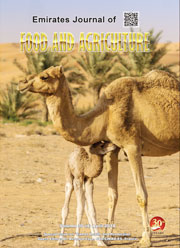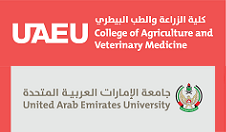Effects of CO2 concentration and UV-B radiation on date palm (Phoenix dactylifera) grown in open-top chambers
DOI:
https://doi.org/10.9755/ejfa.2020.v32.i1.2062Abstract
Date palm (Phoenix dactylifera L.) is a major plant grown under natural conditions in the Middle East and is subject to multiple environmental stresses. Increased concentration of atmospheric carbon dioxide (CO2) and ultraviolet-B (UV-B) irradiation in the growth environment can have a high impact on plant carbon accumulation, and the various factors can function in opposite directions or cause additive effects. The objective of the present investigation was to screen UAE date palm for susceptibility to elevated level of CO2, UVB and their combined effect on a date palm variety was assessed in transparent open - top chambers (OTC) conditions in the hot climate of UAE. After the screening of the cultivars, experiment was conducted in an OTC facility and the treatments were given for 120 days. After the treatment of the selected cultivar, content of chlorophyll a, b and total, carotenoids, protein, amino acids, phenol and activities including γ-glutamyl kinase, proline oxidase, a-tocopherol and peroxidases activity were determined. The results revealed that the high concentration of CO2 alone increased the growth parameters, whereas the treatment with UV-B significantly affected the growth of the plant relative to regulation. Enzyme observations have shown that an increase in antioxidant enzymes can affect a defense response to the abiotic stress-induced cellular damage. Further extension of this study with other cultivated varieties, other stress parameters and determination of yield parameters will give scope to identify new stress tolerant cultivars of date palm trees.










 .
. 